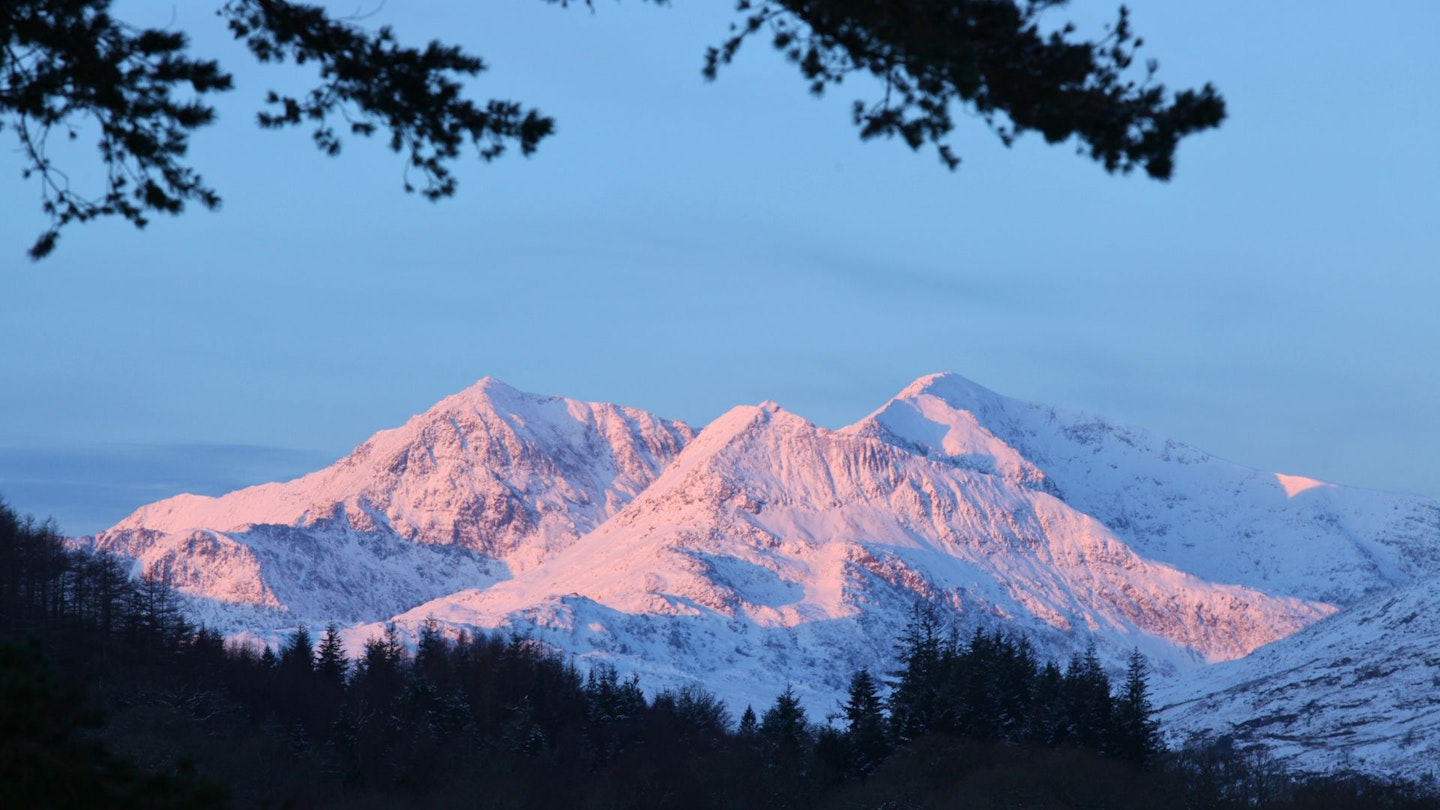Yr Wyddfa (Snowdon) might be a summer tourist hotspot, but it’s also a fantastic mountain in its own right, enriched by human greatness. Perhaps most famously, it’s where Sir Edmund Hillary and Tenzing Norgay trained for what was to be the first ever successful ascent of Mount Everest.
Few mountains undergo such a transformation under snow as Yr Wyddfa. Almost Alpine in appearance, for the experienced hill walker it’s the stuff winter dreams are made of. So, if you’re set on a winter challenge this season, this could be it. In this guide our Gear Editor and qualified Mountain Leader, Ben Weeks, is on hand to share route and safety tips on summiting Yr Wyddfa in winter.
How hard is climbing Yr Wyddfa (Snowdon) in winter?
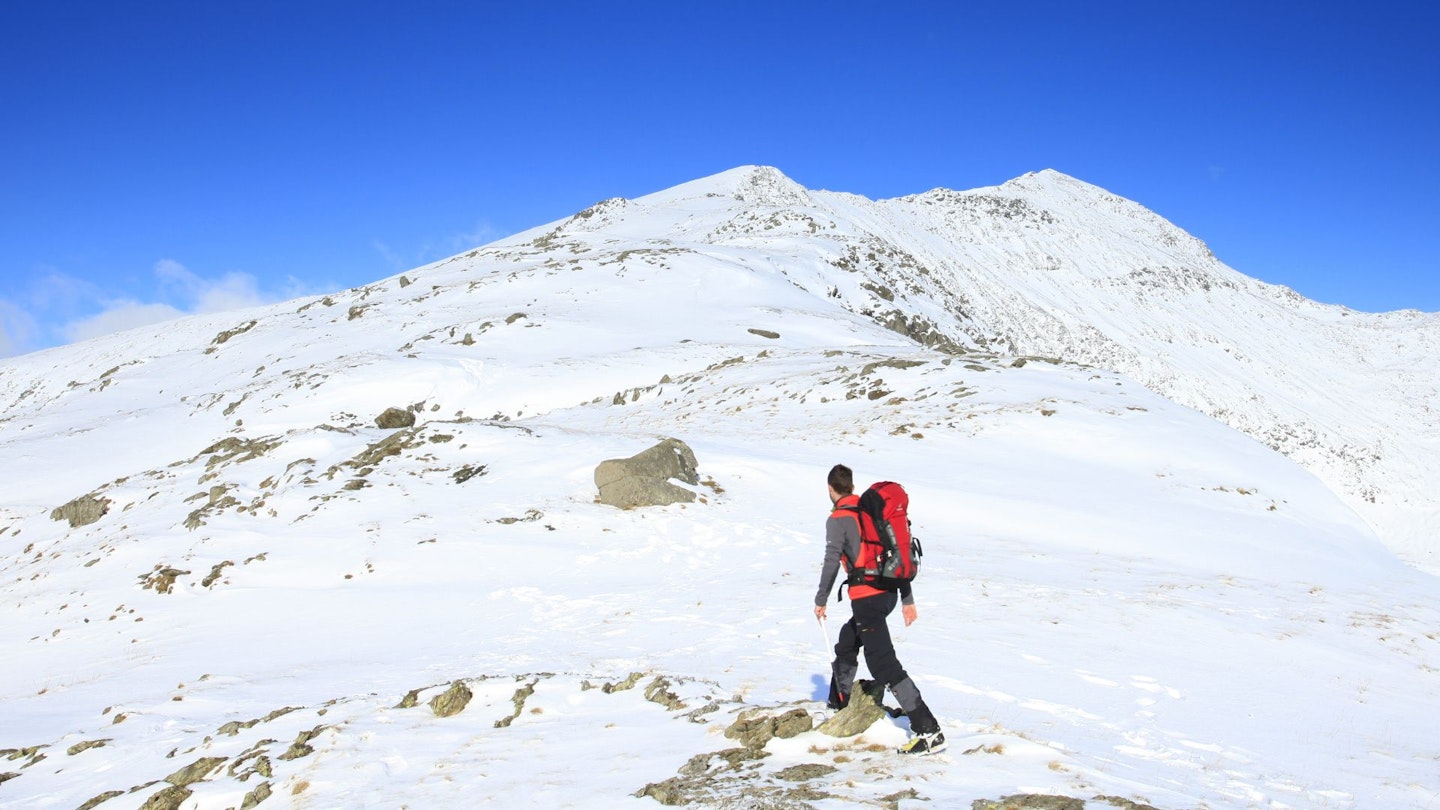
The mountains of north Wales aren’t as reliable for snow as those in Scotland, but you can generally expect winter conditions any time from January to April, with sleet coming as early as October.
Above all, ‘winter conditions’ on Yr Wyddfa means changeability. In winter, the mountain can be almost Himalayan one day, then mild and snow-less a week later. Careful preparation, route planning, and weather watching are key because the conditions are so variable.
When the temperatures are more frigid, Yr Wyddfa’s terrain inevitably becomes more treacherous underfoot thanks to ice and cornices. Daylight hours shrink with sunset occurring as early as 4 p.m. in December, and visibility can be very poor in bad weather. Blanketed in snow, marked trails become meaningless, and familiar landscapes are suddenly unrecognisable.
With these changes comes a true sense of adventure and freedom, but it also means you must have competent map and compass navigational skills to tackle Snowdon in winter.
Winter walking up Snowdon requires extra clothing and technical equipment. Warm layers and items like gloves and hats are essential – as are an ice axe, crampons and the know-how to use them. See the bottom of this page for a full kit list.
Can you do the Three Peaks in winter?
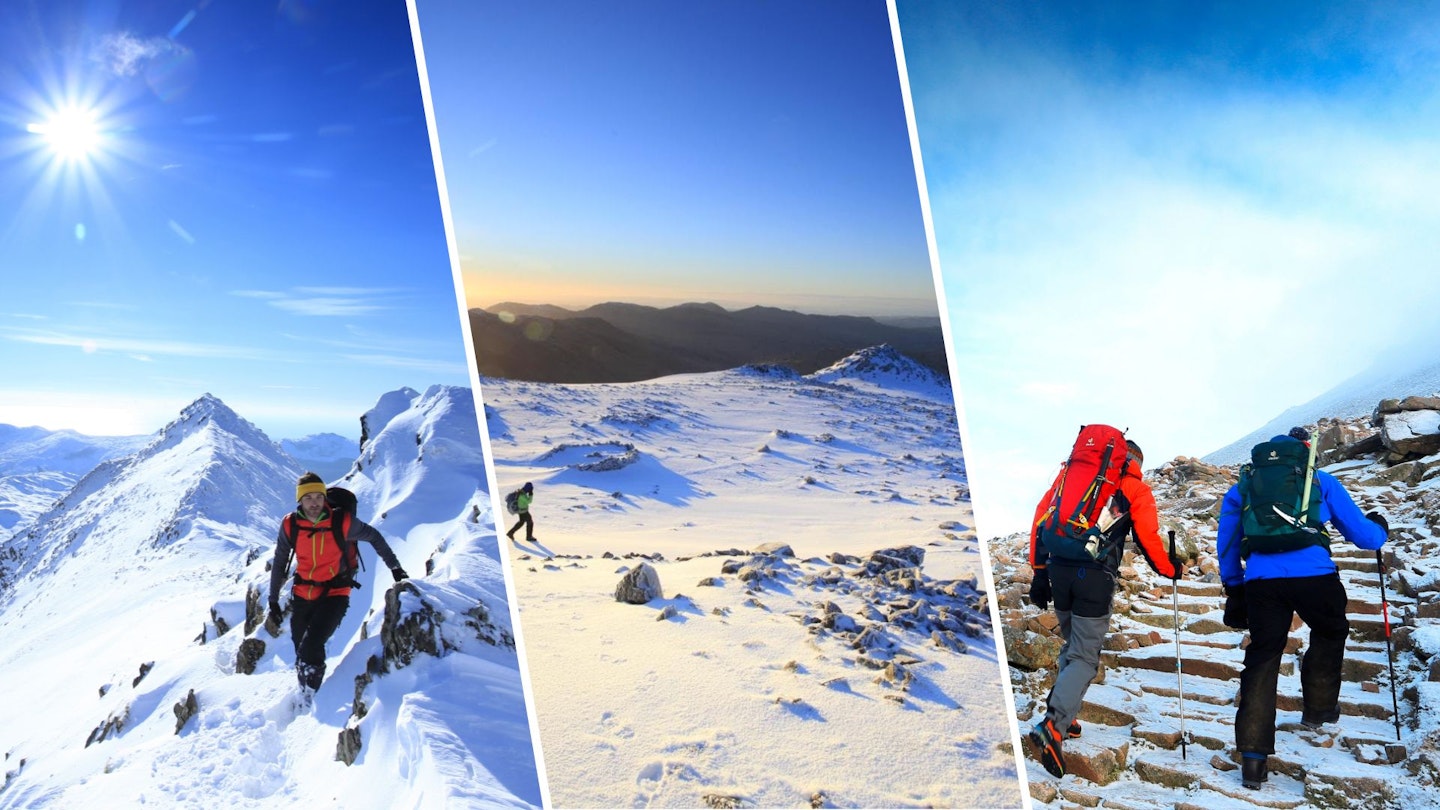
Making the Three Peaks a winter challenge is great for three reasons: it's a greater and therefore more rewarding adventure; the scenery can be more spectacular; and there is almost no one about on the UK's most well-known peaks.
But it's not a challenge to take lightly. You need proper winter kit, navigational know-how and competence, and to plan according to the forecast. Ben Nevis experiences the coldest and most severe winter conditions of the three. But Yr Wyddfa and Scafell Pike can be remarkably bitter as well.
With far few people treading the Three Peaks during the cold season, and facing tougher conditions, this means you really do have to be prepared. Not just for walking in the cold but should an emergency or accident occur, you need to be prepared to wait longer for rescue, should you need it.
Best Yr Wyddfa Snowdon winter route: South Ridge
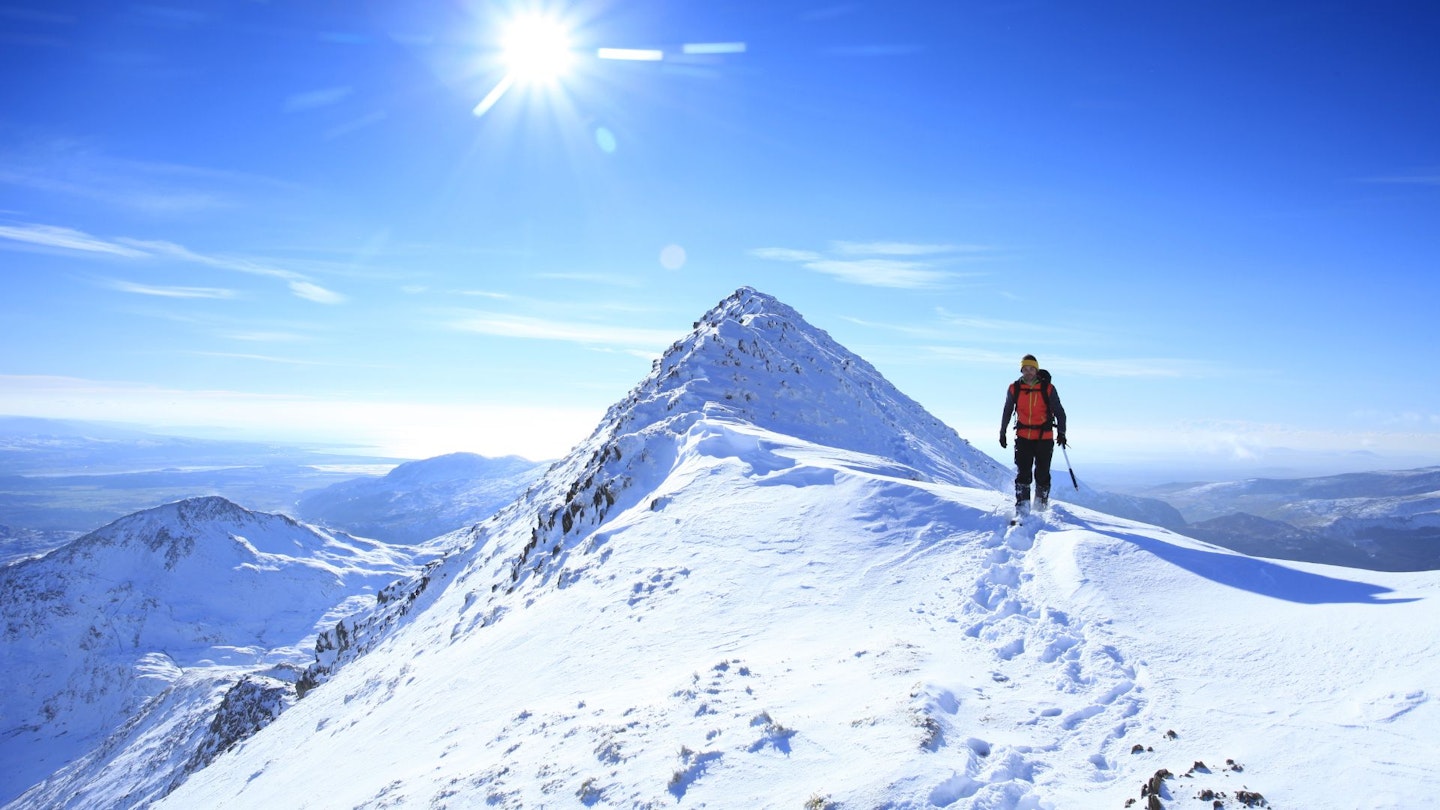
CLICK HERE for a digital route guide in OS Maps
Start/finish: Car park by Welsh Highland Railway in Rhyd-Ddu
Distance: 12.5km
Ascent: 925m
Yr Wyddfa offers a variety of winter challenges, from the notorious Crib Goch ridge traverse to the web of climbing routes that only come into existence during those mythical winter days when conditions are perfect the mountain’s Trinity Face is ‘in’.
But what of the hiker who’d like to dabble in Yr Wyddfa’s winter offerings without committing to anything too extreme? Well, an ascent via the Pyg or Miners tracks can be a challenging outing under snow and ice, and even the usually benign Llanberis Path is not to be taken lightly in winter.
But for our money, the route that offers the greatest bang for your buck in terms of thrill versus safety while still providing a true sense of this wonderful mountain’s winter character, is Yr Wyddfa’s South Ridge.
The walk-in past old mining remains is a good warm up for the legs, and the ascent is gradual, with only a few steep sections to add spice. The upper reaches of the route narrow to a pleasingly thin arete, but without the imminent sense of peril that Crib Goch provides, and the views have the potential to be simply astounding.
Oh, and did we mention that the route starts and finished from a pub? The Cwellyn Arms has roaring fires, hearty meals, and a wide selection of excellent real ales. After an ascent of Eryri’s highest peak in winter, you may well feel entitled to all three.
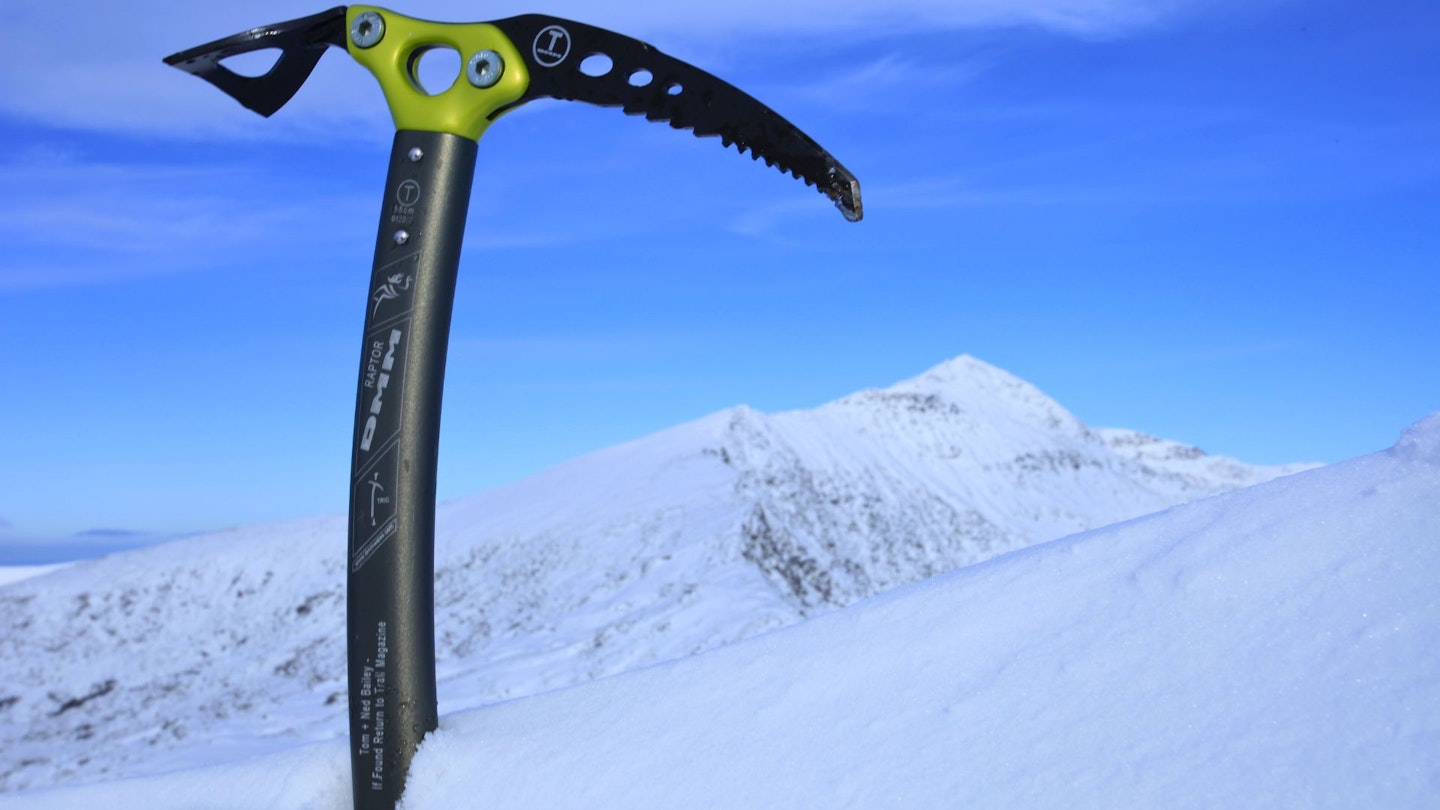
From the car park by the Welsh Highland Railway in Rhyd-Ddu (conveniently close to the Cwellyn Arms) the walk starts with a fairly gentle stroll. Unless snow conditions are low and terrible, the bridle way that leads east – zigzagging a little at first but soon straightening out – should be easy enough to follow.
After just over 1.5km there’s a crossroads, with the Rhyd-Ddu Path heading off northeast. Ignore this (for now) and continue straight ahead (east) with a wall on your left, climbing gently to reach mounds of spoil from old quarrying operations.
Beyond these the bridleway reaches Bwlch Cwm Llan, with the satellite Peak of Yr Aran up to the right, and the South Ridge of Yr Wyddfa leading upwards to the left.
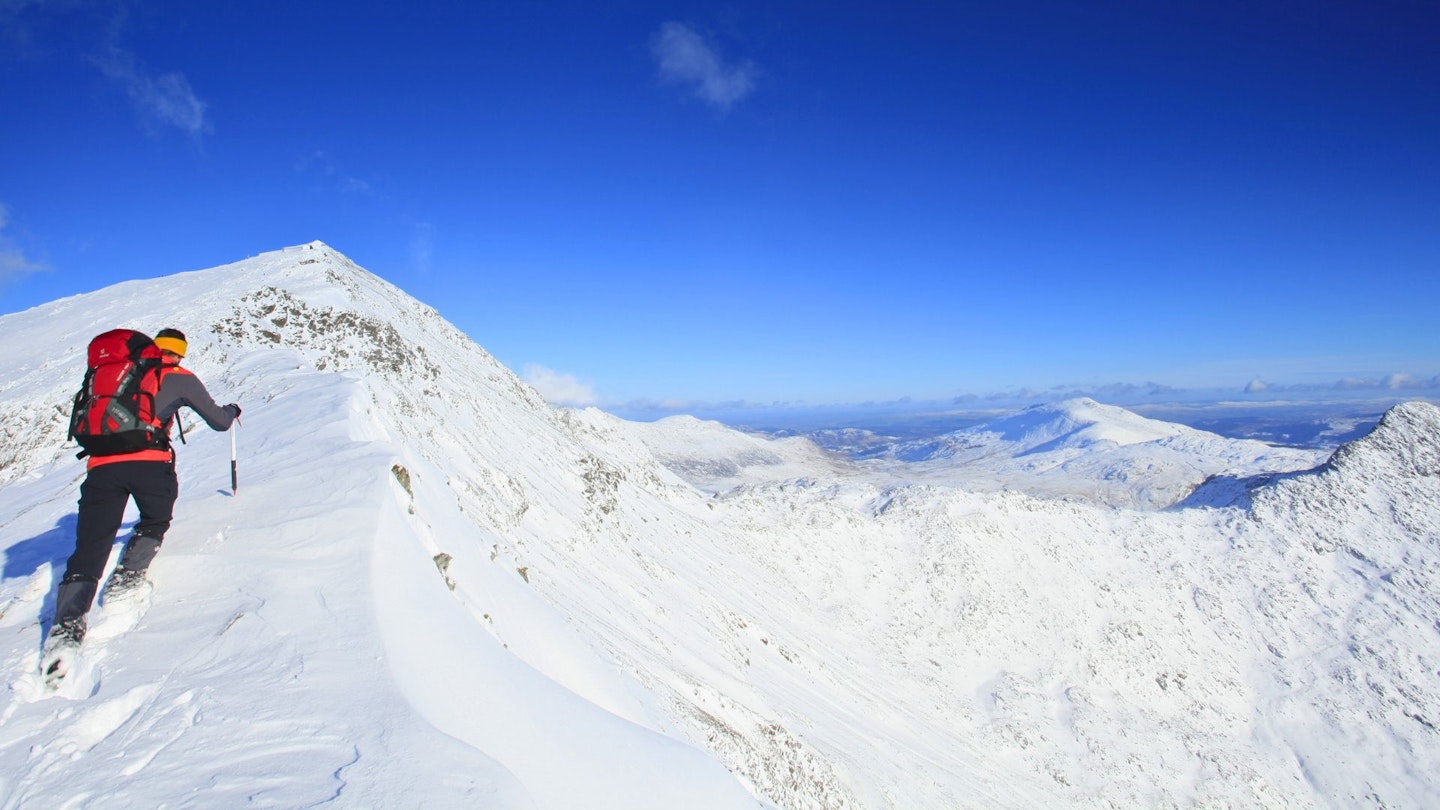
After an initial steep and potentially scrambly section, the South Ridge climbs more gently. The easiest ground is on the west (left) side of the ridge, although it may be tempting to pop your head over the top to admire the winter scenery in Cwm Llan.
However, remember that the prevailing winds are south-westerly in these parts, so any cornices will form poking out over the eastern side of the ridge. They’re unlikely to be particularly large low down, but as you gain height the risk of them is greater, particularly once you’re on the spine of the ridge above the high crags of Clogwyn Du.
Think carefully about where and when you may need to stop to put crampons on (there are fewer convenient spots the higher you go) and be sure to keep your ice axe in hand.
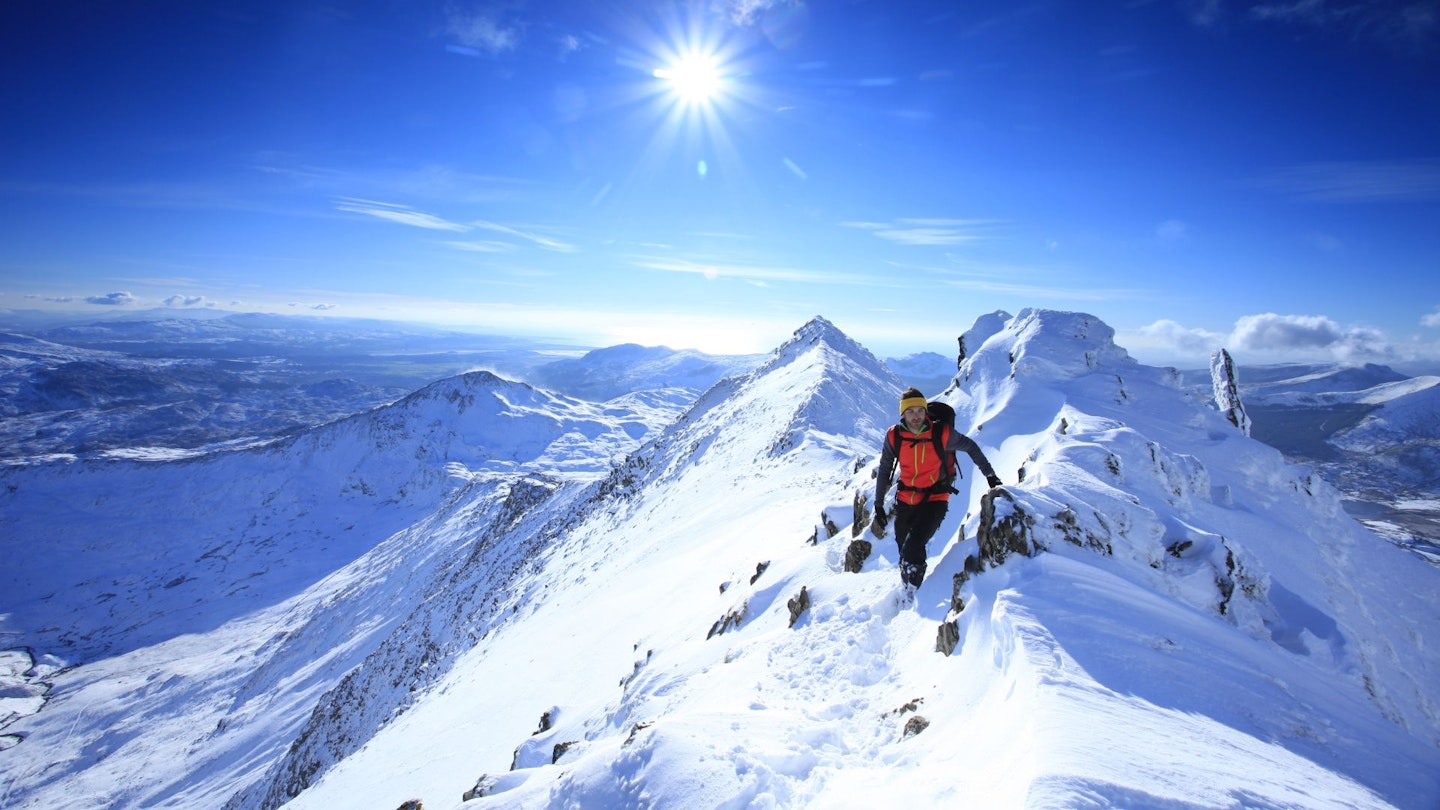
Beyond the 931m spot height above Clogwyn Du the South Ridge reaches is narrowest point at Bwlch Main. It’s important to remain focussed as you traverse this high and narrow arête.
Depending on the snow conditions it may be best to stick to the centre of the ridge or bypass any drifts or fins of snow by traversing on either the left or right. Once again, keep your axe in your uphill hand and take care to make sure every foot placement is on solid snow – this is not a place to fall through a cornice or to trip over your own crampons.
It doesn’t go on for long, and soon the ridge widens and begins to climb again. Before you know it, you’ll be passing the café (which is closed at this time of year) and arriving at the summit cairn, which is significantly quieter that during the summer months.
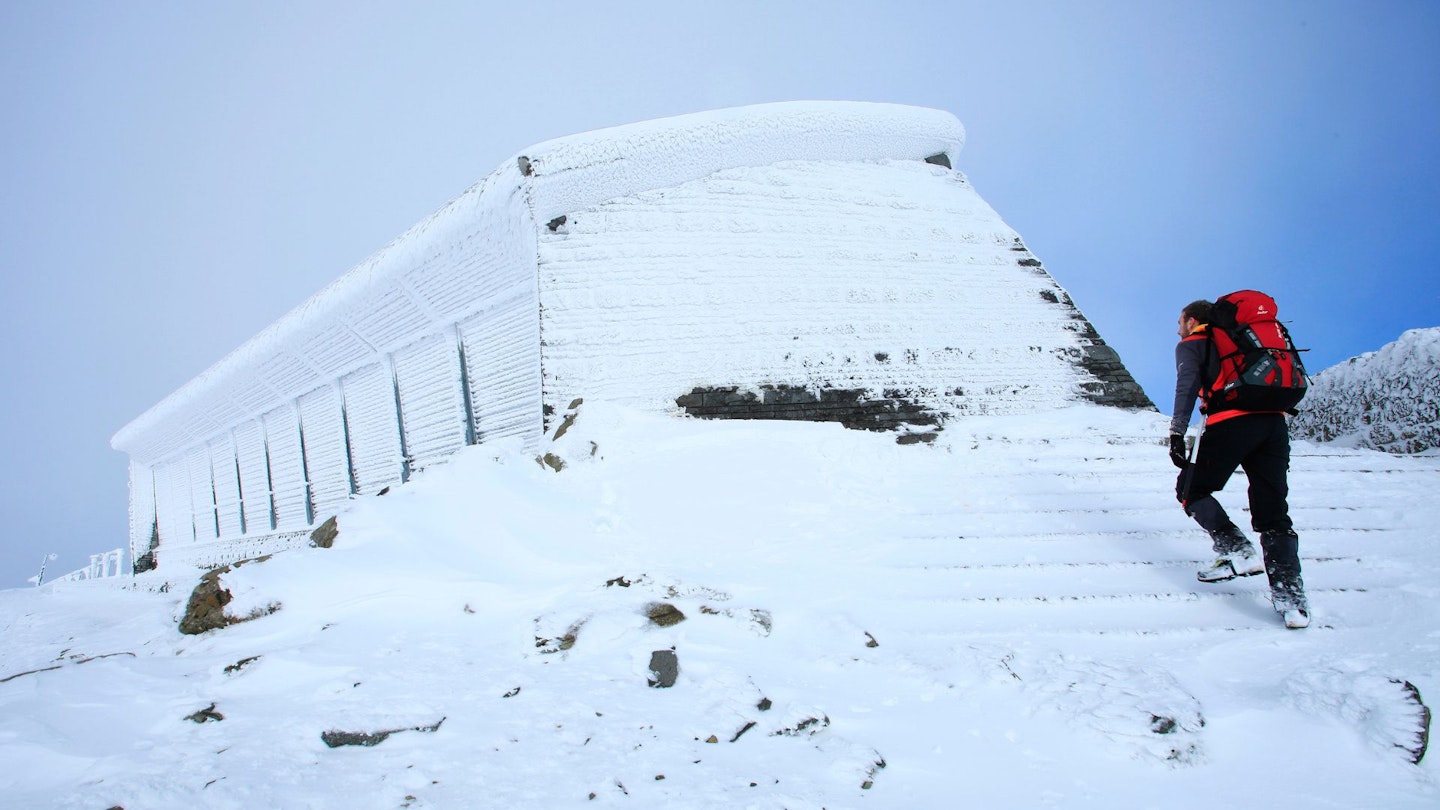
The initial descent is back the way you came, down to and over Bwlch Main. You’ll have a better idea of conditions and what to expect, but once again you’ll need to remain switched on as you cross it.
Just before the 931m spot height, head down to the right, following the spur of ridge that leads off to the west along Llechog. The cliffs to the right are high and steep, and once again cornices are a real threat. Stay back from the edge (or where the edge might be if it’s hidden by snow) and where the ridge swings north-east, just after a wall, head left to follow easier ground south, back through the same wall.
After snaking through some rocky outcrops, you’ll reach more level ground from which, assuming it’s reappeared from beneath any snow, the path heads south-west.
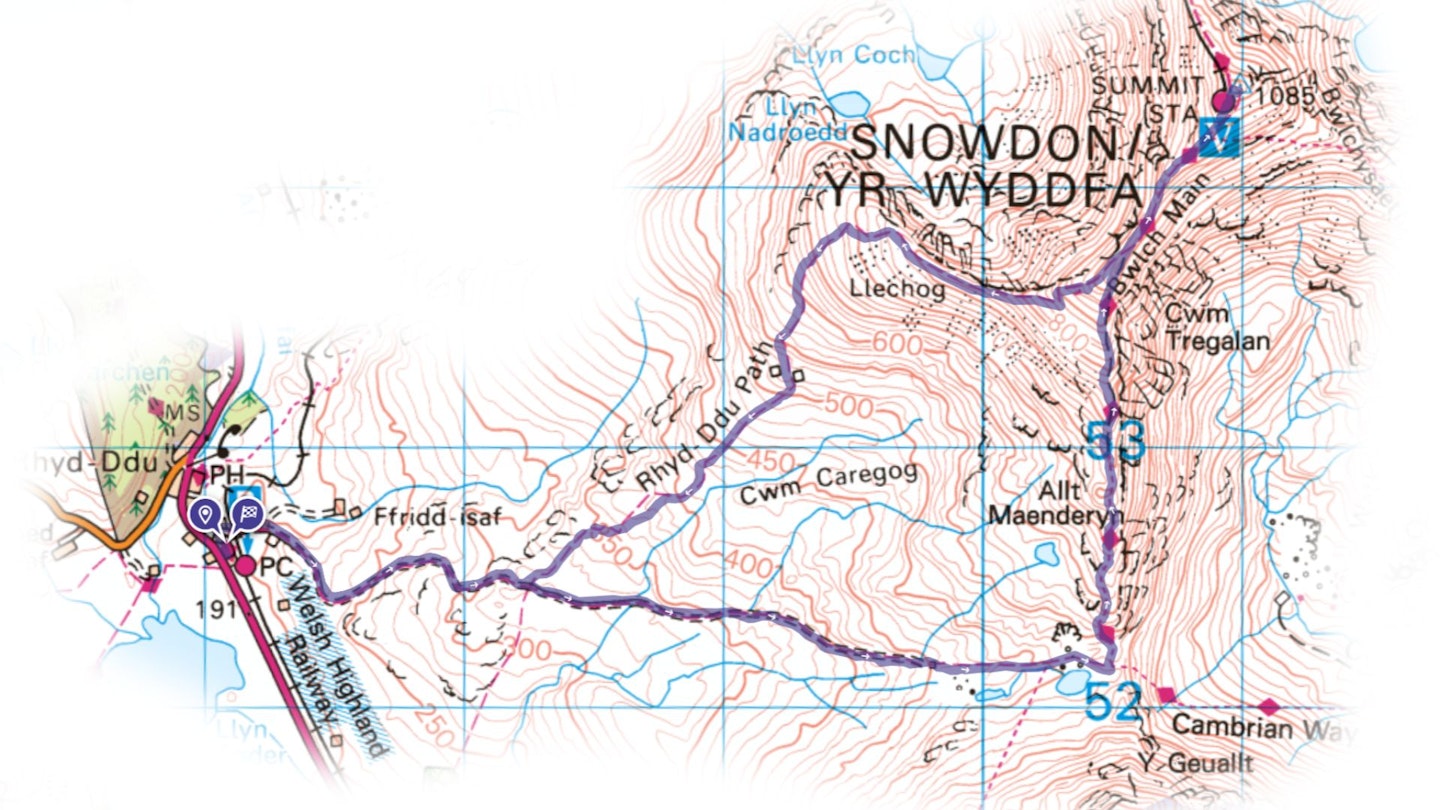
Since leaving the Bwlch Main ridge you’ve been on the Rhyd-Ddu Path and, unsurprisingly, that’s where the path is headed: Rhyd-Ddu.
After passing a sheepfold and through a wall, the path winds gently downhill to pass through another wall, and then shortly afterwards yet another wall (so, three walls in total) to arrive at the crossroads of paths you passed on your way out.
Turn right here and follow the track back to the car park – it's just over 1.5km back to the car park. However, might we suggest a brief detour?
If rather than taking the left fork just before crossing the railway (which leads to the car park) you instead continue ahead on the right track for 180m you’ll arrive at a road. Turn right here, and it’s only another 180m to the welcoming doors of the Cwellyn Arms.
Top tips for climbing Yr Wyddfa (Snowdon) in winter
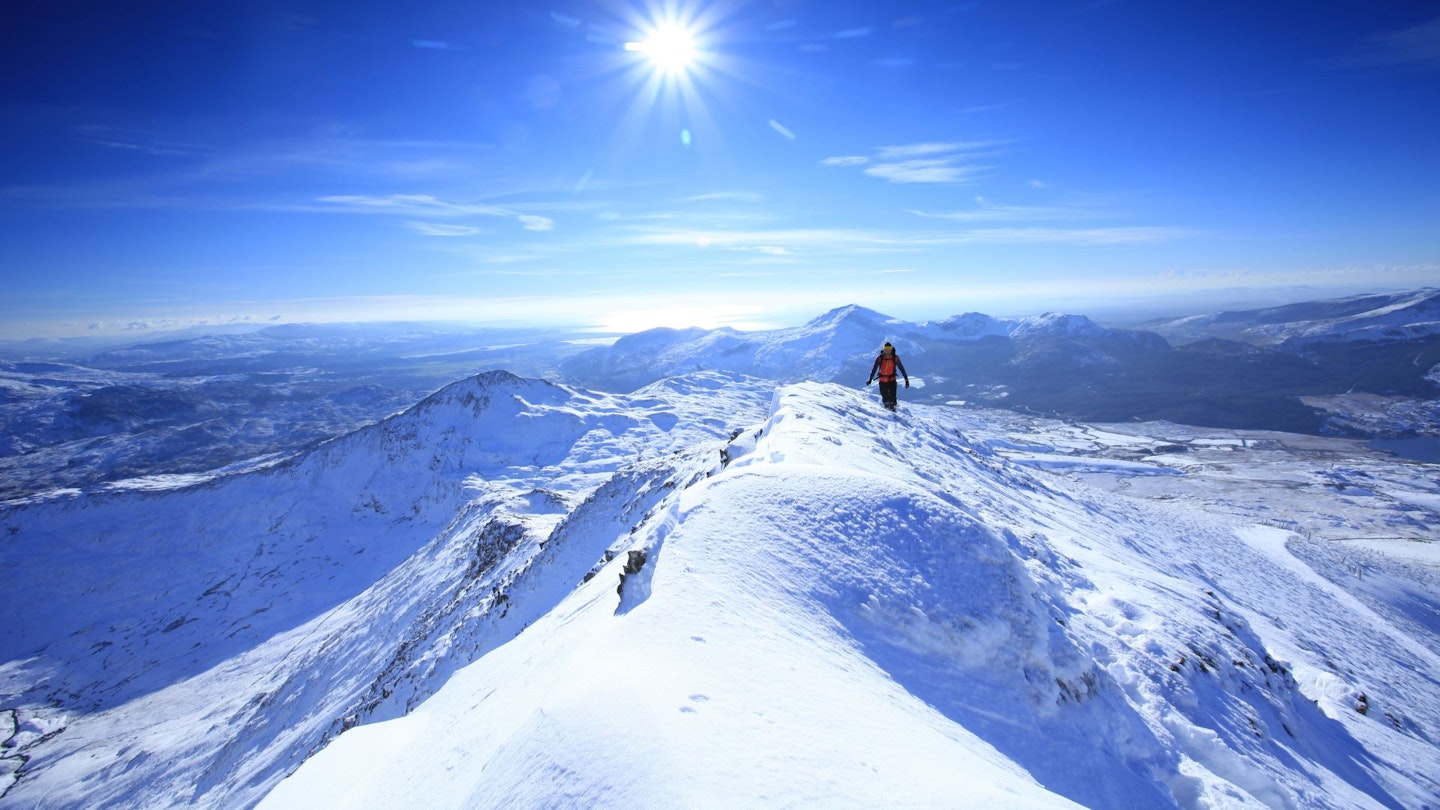
-
Always check the weather and avalanche forecasts and amend your plans accordingly.
-
Be aware of the shorter daylight hours and carry at least one torch.
-
Ensure you let someone know where you’re going and when you’ll return.
-
Never be afraid to turn back if conditions aren’t right.
-
Only attempt a winter route if you have an ice axe, crampons, and the skills to use them.
-
Consider hiring a winter mountain leader if you’re unsure of your own capabilities.
Essential kit for climbing Yr Wyddfa (Snowdon) in winter
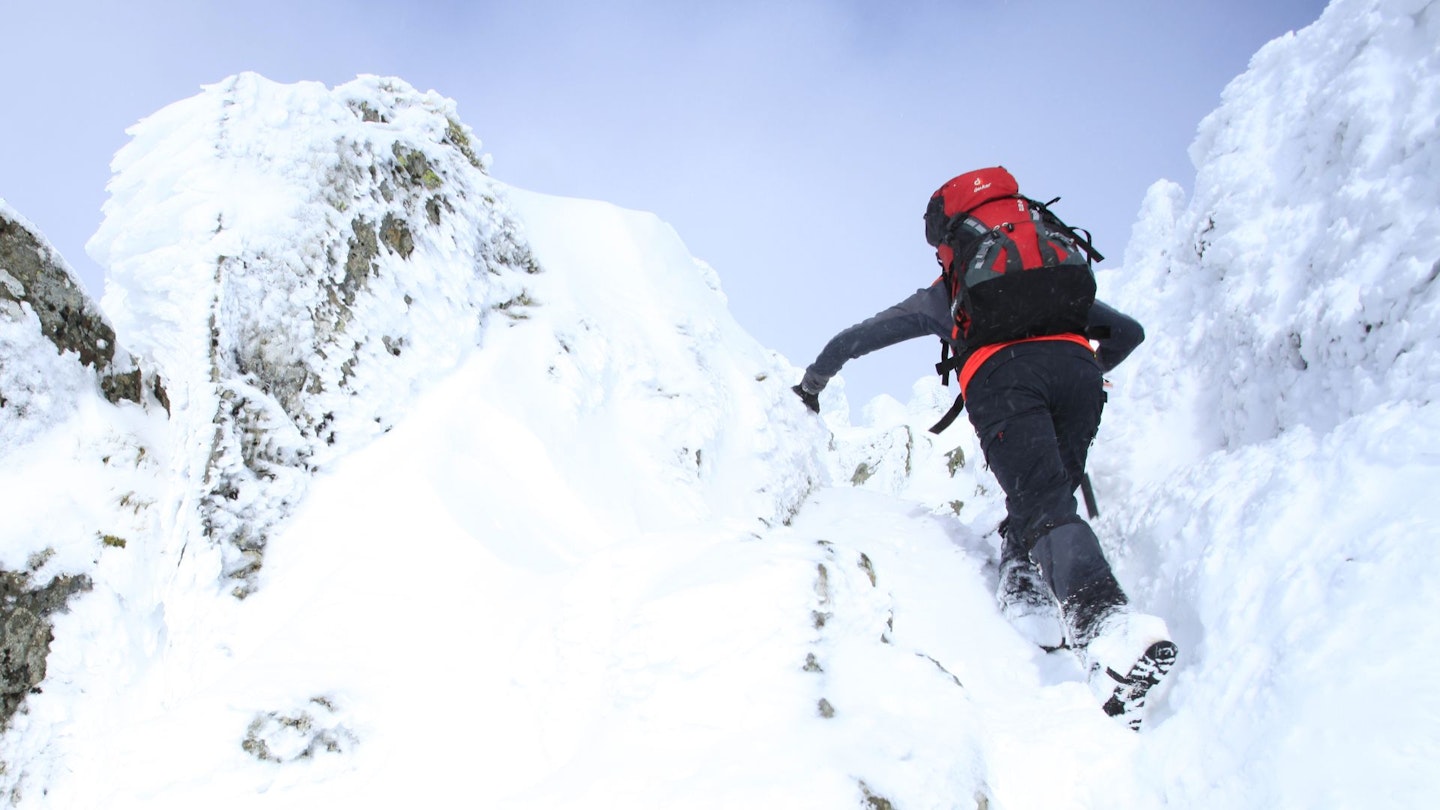
Rucksack (40 litre capacity is about right, and use dry bags to protect everything inside)
Winter hiking boots (stiff soled and crampon compatible)
Crampons (compatible with your boots, plus the knowledge to use them)
Ice axe (basic walking axe is fine, but know how to use it)
Trekking poles (for use before the axe comes into play)
Winter socks (thick and warm, plus a spare pair)
Gaiters (to keep snow out of your boots)
Gloves (thick, with a liner, plus a spare pair)
Walking trousers (quick drying, plus long thermals for extra warmth)
Long-sleeved base layer (merino wool is warm and wicking)
Insulating mid layer (a fleece or light down or synthetic jacket or gilet)
Waterproofs (sturdy hardshell jacket and trousers)
Insulating over jacket (synthetic insulation stays warm when wet)
Warm hat (bobbles are a nuisance under a hood)
Scarf/buff (for keeping your neck to your nose warm)
Goggles (to protect your eyes from spindrift and bright sunlight)
Map and compass (and know how to use them)
GPS (handy in poor visibility, but not a replacement for map and compass)
Head torch (plus a spare, plus spare batteries for both)
First aid kit (doesn’t need to be vast, but should cover the basics)
Emergency shelter (ideal for exposed lunch stops and emergencies)
Watch (keeping track of time is important)
Mobile phone (keep it warm on your body to preserve the battery)
Camera (the scenery may well be spectacular)
Food (take more than usual as the cold burns more calories)
Liquid (it’s important to stay hydrated and a hot drink is a great pick-me-up)
Useful winter hillwalking links
The British Mountaineering Council: Essential winter know-how
Mountaineering Scotland: ThinkWINTER - safety and skills
Mountain Weather Information Service: mwis.org.uk
Scottish Avalanche Information Service: sais.gov.uk
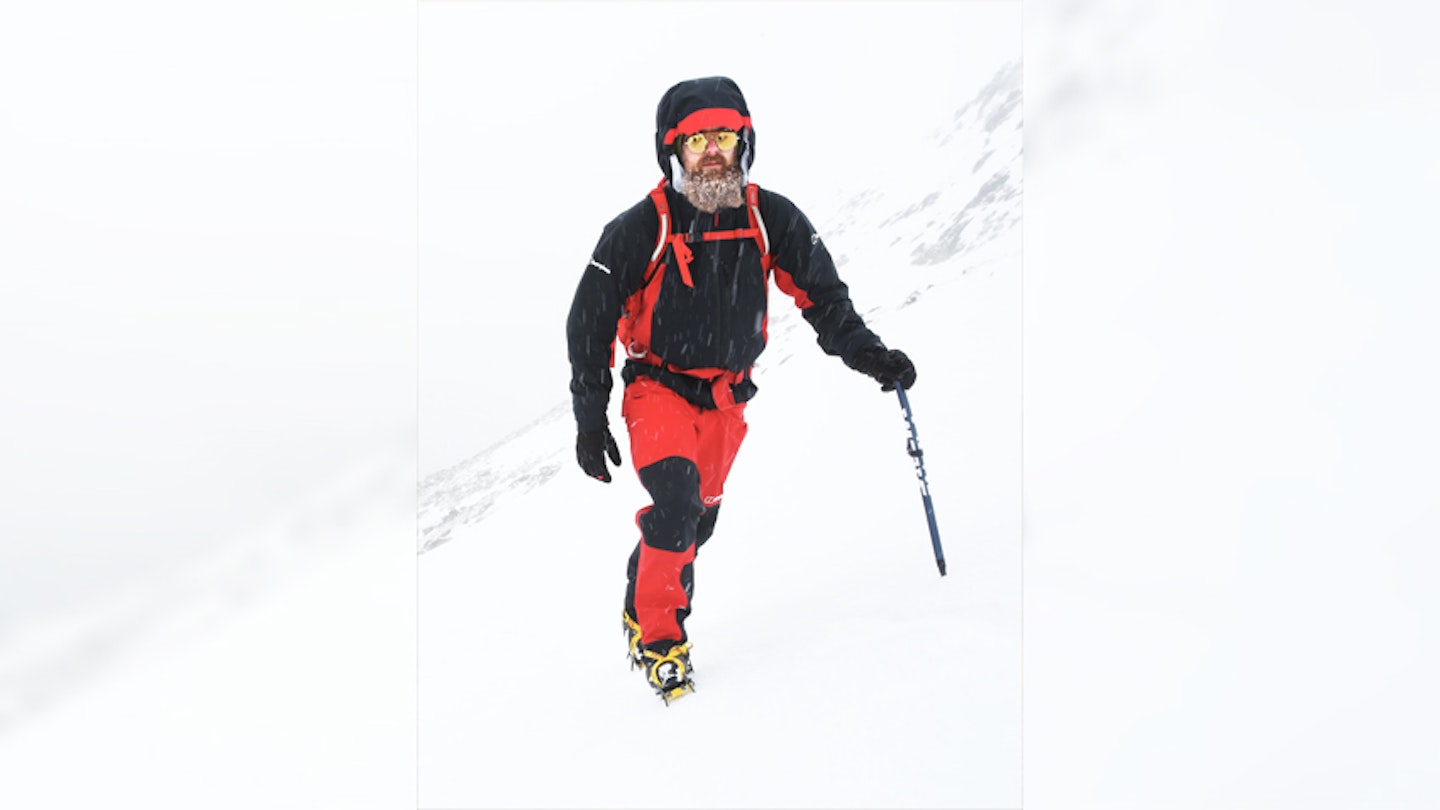
Ben Weeks (above) is Trail Magazine's Gear Editor and has been with Trail and LFTO for over 10 years. Ben is a qualified Mountain Leader and Climbing Instructor.
